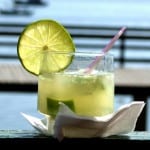Posts Tagged ‘Soul Cachaca’
Kai Pee Ree Nyaaa
This video is an interview of Mark Lester at NYC Bar and Wine Show of Soul Cachaca – he discusses Cachaca and why it is becoming one of the hottest categories in the Spirits industry. My experience with Cachaca began about 10 years ago when I held a TasteDC event at the Brazilian Cultural Institute in Washington, D.C. and my staff and I mixed/muddled over 100 Caipirinhas – the traditional mixed drink of Cachaca consumed in Brazil (See Recipe Below). We also enjoyed the native dish of Brazil – Feijoada, a stew of pork and other goodies with Farofa (a toasted manioc flour mixture) and delicious boiled collards greens.
According to the Press Release from RDP Group, the PR Agency for the New York Bar and Wine Show:
The Brazilian Trade Bureau will present Brazil’s Sexy Spirit, Cachaca, quoted by Bar Business Magazine as “America’s Drink of the Year 2011” for Patrons throughout the United States.
Cachaca is a drink obtained from sugarcane cuts and distillation in Brazil for over 400 years. Cachaca was discovered between 1516 and 1526; mere years after sugarcane plants were implemented in the Pernambuco region of Brazil. Being the first distilled drink of the Americas, produced before pisco, tequila, and rum, cachaca has been a product of local culture for upwards of 300 years. Today, bottles of cachaca can be purchased in a variety of flavors.
Cachaca is actually Rum, or better yet “Rhum Agricole” – you see, rum can be made with sugar cane, but most of the time it is made from the leftover remain of sugar production – molasses. I’ve had rum made from pure sugar cane and solely from molasses as well, and they are somewhat different in taste. Having said that, I got hell at the DC Rum Festival I organized for TasteDC a few years back when one of the rum importers told me that rum made from molasses was just as good if not better than rum made from pure sugar cane! I think the taste difference is more in it’s un-aged pure form, but when you start adding barrel aging to the equation, all bets are off – there are so many wood, temperature, climate and other factors with aging in barrels, that I’d have to do much more research in flavor profiles.
Cheers!
Charlie “I Drink on the Job” Adler – Purchase the Book on Amazon at I Drink on the Job
Categories: Charlie Adler, ethnic cuisine, Uncategorized
Tagged: Brazil, Cachaca, Caipirinha, Charlie Adler, cocktails, farofa, feijoada, idrinkonthejob, New York Bar Show, Soul Cachaca, Spirits
 Caipirinha
Caipirinha




